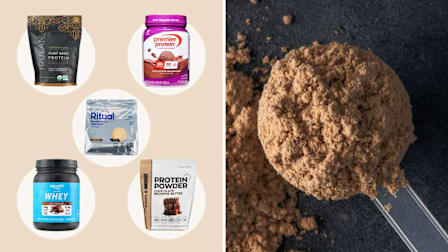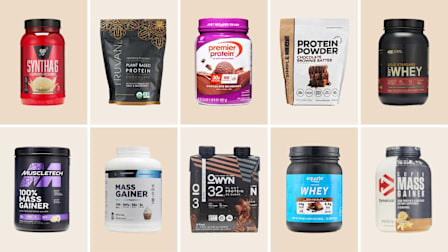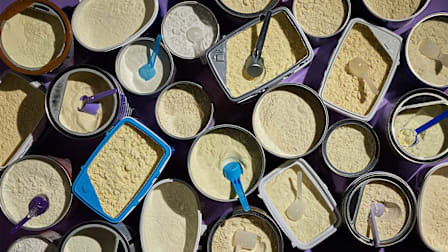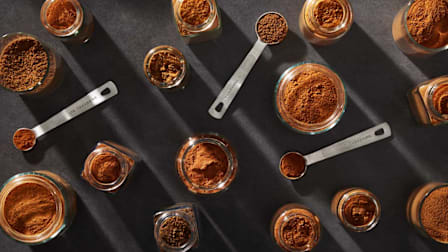What's With Costco's New Rotisserie Chicken Bags? And Are They Safe?
The popular birds will eventually appear nationwide in more eco-friendly plastic bags instead of plastic containers. But some consumers are already reporting that the new bags leak.
On a recent Thursday morning at a Costco in Oceanside, N.Y., I took my place in a line of eight people waiting to get our hands on a fresh rotisserie chicken. Hot off a rotating spit, carrying the scent of a combination of spices that Costco has managed to keep classified, and reliably moist and tender. It’s not surprising that Costco sold over 137 million rotisserie chickens globally in 2023.
Costco Customers Report the New Plastic Rotisserie Chicken Bags Leak
According to a Reddit thread, some customers are finding that the new rotisserie chicken bags are oily and have had some problems with leaking. One Reddit user wrote that her hands became greasy after grabbing two chickens in bags to put in her cart—and that the grease transferred to the shopping cart and checkout belt. Over on TikTok, Costco customers are uploading videos explaining how it’s more difficult to pick out a juicy chicken when it’s in a plastic bag, and how the chickens are greasier in the bag.
But one Reddit complaint is the stuff of post-Costco trip apocalyptic nightmares. Picture this: a river of fragrant chicken juice gushing out from the new bag to drench the trunk of your car. Put a fork in us.
Photo: Smith Collection/Gado/Getty Images Photo: Smith Collection/Gado/Getty Images
Reddit posters suggest preventing leaks by wrapping the new plastic chicken rotisserie bags in one or several additional plastic bags available in Costco’s meat department. If you want to make a scientist cry, suggest solving a plastic problem by wrapping plastic in more plastic.
Shanika Whitehurst, CR’s associate director of product sustainability, offers a better solution. “Probably the more sustainable way is not to wrap in a bag at all,” she says. “If you know you will purchase a chicken, and it will be hot, I would use the cardboard boxes made available to people to put their items in and skip the bag altogether.”
But let’s set our plastic concerns aside for a minute to focus on the mother of all visceral reactions that we feel in our souls when we confront chicken juice splashing all over the surface of our countertops, upholstery, floors—and, heaven forbid, our hands or other body parts. Is a bag that reportedly leaks chicken juice even safe? We spoke with CR experts to find out how risky this can be and get important food-safety tips.
See our 2021 article, "Everything You Ever Wanted to Know About Costco Chicken." And find out whether store-bought rotisserie chicken is good for you.
Risks of Leaking Chicken Liquid
There’s good news and bad news. First, the good: If we’re considering raw chicken that leaks, there’s very likely a host of pathogens that could be in any liquid that comes off it, including salmonella and campylobacter, says James E. Rogers, PhD, director of product safety testing at CR. The bacteria can lead to food-borne illnesses such as gastroenteritis. Because Costco’s rotisserie chicken is cooked though, and thorough cooking at the right temperature kills bacteria, the risk is far lower.
But you’re not quite out of the woods if your rotisserie chicken leaks juices into a bag or a surface like a countertop. “The cooked chicken juices, once they leak into a bag, could be a good source of nutrients for bacterial growth, both pathogens and non-pathogens,” Rogers says. “Plus, they can get yucky and possibly smell once the spilled juices are in the bag for a long time.” Rogers says factors like time, temperature, and initial bacteria load can influence how long is too long for the juice to remain in the bag before it becomes dangerous.
Photo: Consumer Reports Photo: Consumer Reports
Because there’s no way of knowing when liquid from chicken can become dangerous, it’s important to regularly clean reusable shopping bags. CR recommends using reusable plastic bags (not fabric) for items that can leak, like poultry, meat, milk, and frozen goods. Clean the bags with a disinfecting wipe or wash them in warm, soapy water—preferably every time you use them. Keep in mind that all reusable bags aren’t the same. When CR tested reusable bags, we found that some get right to the point and boldly leak liquids as soon as they are poured inside of them, while others sneakily catch liquids in their linings, which makes them more difficult to clean. When you’re cleaning your bags, make sure to also clean the lining.
If chicken juice leaks onto counters, floors, or upholstery, Rogers recommends cleaning any hard surface that may have spillage with warm soapy water. “Regarding upholstery, I would dab the spot with paper towels and then follow up with upholstery cleaner or the upholstery attachment on your carpet cleaner,” he says.
Can the Bags Leak Plastic Chemicals Into Chicken?
Even though my hunt for a plastic rotisserie bag was a flop, I wasn’t foolish enough to leave Costco without at least one rotisserie chicken, which cost me $4.99 and could feed two hungry people. My chicken was packaged in its traditional hard-plastic shell and tray (others come in clamshell packaging). I shook it like mad over my kitchen sink—no liquid leaked out. It wasn’t until I turned the container upside down and shook it some more that a small stream of liquid finally seeped through the packaging.
I noticed that the hard top of the old packaging was rigid and more of a dome shape and that it didn’t really make contact with the top of the hot, steaming chicken inside. (This may vary depending on the size of the chicken, and the bottom of the chicken, of course, touches the plastic tray.) I asked Tunde Akinleye, CR’s test program leader of food safety, whether Costco’s new softer plastic, which is flexible and absolutely makes contact with the hot, cooked chicken, poses more of an issue when it comes to plastic chemicals that could leach into food.
“The answer would depend on the type of plastic bag,” Akinleye says. “The FDA-approved plastic bags for storing hot food include polypropylene or PP (plastic #5) and polyethylene terephthalate or PET (plastic #1). Both are considered safe for storing hot food items. Others, such as high-density polyethylene or HDPE (plastic #2), or low-density polyethylene or LDPE (plastic #4), are not as effective for hot food storage as PP or PET.”
That said, Akinleye adds that it’s always advisable to keep hot food in contact with any plastic material to as short a period as possible. “That’s because both conventional heating and high-temperature storage of food in most types of plastic can lead to leaching of very small amounts of plastic additives or breakdown of the plastic polymer itself over time,” he says.
And under no circumstances should you reheat rotisserie chicken in its plastic bag or in any plastic, Rogers says. Instead, you can reheat chicken without skin in a pan or oven-safe glassware dish by adding a shallow pool of chicken broth or water, covering it with a layer or two of foil, and baking it at 375° F for 15 to 20 minutes or until it registers 165° F using a meat thermometer.
Unanswered Questions
While our search for the elusive Costco plastic rotisserie chicken bags proved unfruitful, we’re now left with a few questions. What type of plastic is Costco using in its new rotisserie chicken bags? Why did Costco make the switch? In which states and stores can you already find the bags? And, most pressing of all: Will Costco reconsider this initiative if the bags are found to be prone to leakage?
CR reached out to Costco with our questions. As of publication, we had not heard from the company, but we’ll continue to provide updates once we get more information.

















